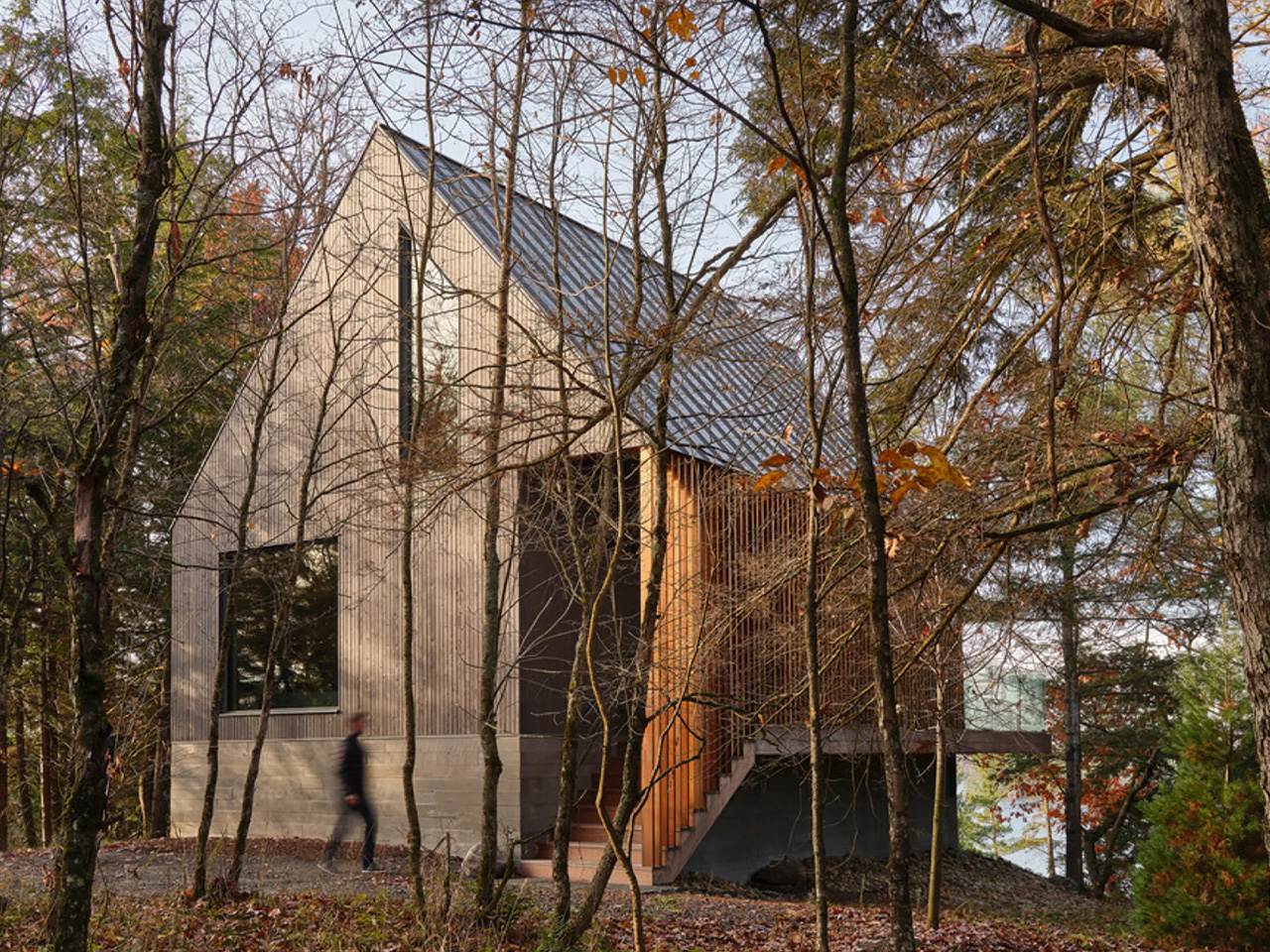The Tanglewood Music Center Orchestra, Ozawa Hall, August 5, 2024 Maurice Ravel, Tombeau de Couperin, conducted by Na’Zir McFadden Henri Dutilleux, Métaboles, conducted by Alan Gilbert Silvestre Revueltas, Sensamaya, conducted by Ross Jamie Collins Joseph Haydn, Symphony no. 90 in C, conducted by Alan Gilbert Programs of music from various periods often start with Mozart or Haydn as a way of easing the audience into the listening experience. Superficially, their music seems more predictable, requiring less concentration, easier on the ears.
This does an injustice to wonderful works whose formal structures require careful concentration in order to appreciate their elegance and power. It was unusual and refreshing, then, that Alan Gilbert not only chose a relatively unfamiliar Haydn symphony (one I had never heard live before) but gave it a place of honor at the end of a substantial program of works otherwise from the 20th century. The opening work of this program by Ravel was, in fact, also easy on the ears, a lovely way to welcome the audience.

The orchestral version of “Tombeau de Couperin” is a selection of four of six movements originally composed for piano between 1914 and 1917 and orchestrated two years later. Working in the forms and spirit of his 18th-century predecessor, François Couperin, Ravel created a modest masterpiece that is magical, accessible, and yet, in its way, quite profound. The orchestral version offered the Tanglewood Music Center Orchestra the opportunity to show off the considerable talents of its wind players.
Beneath its enticing surface, there is a depth of feeling that Ravel rarely brings out in full force. A “tombeau” is a memorial piece, paying tribute to a person or, in this case, a past. Ravel uses some of the dance forms of Couperin’s harpsichord piece—Forlane, Menuet, Rigaudon—paying tribute to the spirit of that era.
But the act of memorialization also applies to the moment of composition as well: Its dates coincide with World War I (during which Ravel served at the front, briefly, as a truck driver). Each of the original movements is dedicated to a friend who lost his life in that conflict. When asked why the music is so elegantly beautiful, Ravel is reputed to have said, “The dead are sad enough, in their eternal silence.
” There is only one brief moment during the Trio of the elegant Menuet, when the smooth flow of melody rises to a brief expression of pain, but then rapidly subsides; the melodies of the Menuet and Trio dance together in counterpoint. The performance by the Tanglewood Music Center Orchestra exhibited the lushness of this summer’s string section, as well as the virtuosity of its winds, particularly the solo flute and oboe (Aram Mun and Abigail Hope-Hull, respectively), who handled their challenging parts with aplomb, given the quick tempos taken by conductor McFadden. The interpretation emphasized the smooth flow of the music rather than individual details; a light and elegant mood prevailed.
Ravelian influences are felt in the music of Henri Dutilleux, who is one of the essential composers of the second half of 20th-century music, and, like a small number of his composer peers, too rarely heard from. His orchestral works could be described as “post-impressionist” with roots in the musical language of Ravel and Debussy, especially in the variety, color, and versatility of his orchestration. But his stylistic range is wide, encompassing other major trends in 20th century music, and his music speaks with a clear personal voice, one which evolved steadily over the course of a very long life: He lived from 1916 to 2013.
Although a number of Dutilleux’s important orchestral scores were composed for Charles Munch for the Boston Symphony, “Métaboles” was commissioned by George Szell and the Cleveland Orchestra in 1959, and only delivered and performed in 1965: Dutilleux was a slow and meticulous craftsman; as a result his output is small but of uniformly high quality. The title has several meanings: In the natural world, it refers to metamorphosis, the constantly transforming states of living things; in poetry, it refers to the technique of rearranging a fixed set of elements (like words in a line) to produce a variety of meanings. Both apply in this work, whose five overlapping movements are played continuously.
A single structure in five interrelated phases, with steady variation of material from start to finish, it is kaleidoscopic, with dazzling colors and strong dramatic contrasts. At various points, it shows influences of Stravinsky (especially at the start), Varèse, Schoenberg, and even Dutilleux’s great contemporary Lutoslawski, whose “Funeral Music” for strings of 1958 seems to be a close relative. While its impressionist roots are audible, the breadth of its color palette and intensity of its dramatic contrasts impart a contemporary profile.
The first of the five sections, “Incantatoire” begins with sharp chordal accents, played by xylophone and plucked strings over sustained high winds, that recall the opening of Stravinsky’s “Les Noces” (his Russian wedding cantata). This forms a concise ritornello for both this section and (returning near the end) for the entire work. Flourishes for solo winds, especially bass clarinet, recall the introduction to “Le Sacre.
..,” and repeated static chords reference “Symphonies of Wind Instruments,” as well as works of Varèse such as “Hyperprism.
” The Stravinsky-an resemblances flow together in an un-Stravinsky-an way emphasizing the metamorphic process. The second section, “Lineaire,” is scored for strings only, deployed in blocks of uniform color that provide material for a rich internal conversation. At times, the complex block chords are scored by dividing a single section (such as violas, cellos, etc) into as many as eight voices, sometimes with only two instruments per part.
This weaves a diaphanous web of magical sonority, just one example of the resourceful orchestral effects that make this score so captivating. The third section, “Obsessional,” uses a 12-tone row clearly presented by jazzy plucked basses against the sustained string harmonies, initiating a lively scherzo based on every conceivable permutation of the row, technically a passacaglia but not sounding like one. The movement is light and playful, unlike some of its expressionist forebears.
In contrast, the fourth section, “Torpide,” is static and homophonic, with a six-note block chord played in homogenous colors by different sections of the orchestra. Its quiet, mysterious atmosphere is one that is characteristic of this composer, who composed an entire string quartet entitled “Ainsi la nuit” (“Thus the night”). The final, brassy “Flamboyant” builds contrapuntally from dueling trumpets to a kind of royal battle among all the brasses; a brief hushed recall of the second movement adds a long string melody that builds in intensity over the growing orchestral hubbub, and the steady build-up leads to an orgiastic climax and abrupt ending.
Alan Gilbert knows this score thoroughly and kept his energetic and talented ensemble firmly in hand, eliciting the wide dynamic range and color spectrum the music requires. It was fun to watch his language of gestures, from near-immobility with subtle hand or finger flicks drawing out details, to full-body calisthenics leading the charge, especially toward the end. The players responded brilliantly.
While “Métaboles” was clearly the centerpiece of the program, what followed the intermission was in no way overshadowed by it. First, Revueltas’ atmospheric “Sensemaya” picked up some of its bright colors, adding an obsessional rhythmic bass line in a septuple meter (seven beats per bar) and a so-called “neo-primitive” atmosphere built up in layers (again recalling “The Rite..
.”) that works well for this setting of a Mayan snake-hunting chant (the original version actually employed a chorus). It was ably led by Ross Jamie Collins, maintaining a rock-solid beat.
The real programming coup was ending with the rarely heard Haydn symphony. The contrast with the preceding high-energy, sometimes garishly colored scores was shocking, and in a good way: It sensitized our ears to Haydn’s quieter sound-world, which in other contexts might seem routine or predictable. Conducting without a score, Alan Gilbert paid minute attention to Haydn’s carefully indicated dynamics.
The gentle flow and humor of Haydn’s evolving motives (they, too, undergo metamorphosis) emerged with delightful freshness. Add to this the fact that, in the extended flute and oboe solos, Gilbert encouraged his players to ornament their parts—something I have never heard before in a symphonic performance—and you have an element of surprise totally appropriate to the composer. This symphony was composed in 1788, and is part of a final set of three written for performance in Paris prior to Haydn’s taking up residence in London, where he produced his final, much better-known, dozen.
The first movement introduction foreshadows its main theme in slow motion, and its development section extends the solo flute and oboe writing of the second theme, giving the players extra chances to ornament and show their skill. Haydn prods his listeners with a false recapitulation before sneaking back into the right key. The slow movement is in Haydn’s patented double-variation form (better known from Symphony no.
103, the “Drum-roll”) with major and minor strains alternating. The Trio is simply an oboe solo, beautifully rendered, minimally accompanied by discreet strings, with one interjection of the other winds. Gilbert carefully ensured that the accompaniment would remain in the background, keeping the spotlight on his soloist.
It was in the finale that Haydn and Gilbert really had fun pulling the audience’s collective leg. Working in what seems like a rather straight-forward sonata form, Haydn arrives at the end of his recapitulation and stops rather abruptly. The audience had a moment to decide whether to applaud; after a few uncertain claps, Gilbert turned directly to stare at them with his finger in the air—there was more to come! (Laughter.
) Haydn had inserted four measures of rest, to produce precisely this reaction. The music continued to a rousing finish. Now: applause! But for some reason, rather than bowing, the conductor scratched his head while his concert mistress Fengwan Chen stood up and started whispering something to him.
He stepped down and started examining the first violin part, looking perplexed. (Laughter again.) He returned to the podium, but once more stepped down and re-examined the part.
Finally, he resumed the performance, repeating the second half of the movement (as indicated in the score) and continued without interruption all the way to the end, even though during that four-measure gap he glared at the audience to prevent any further mishaps. In the hearty laughter and applause that followed, the audience seemed to be congratulating itself as well as Gilbert for escaping, more or less intact, from the trap Haydn had laid for them. It was a delightful and genuinely Haydn-esque way to conclude a thoroughly balanced, varied, and engaging program, one that was especially generous in showcasing the talents of the individual members of this splendid orchestra.
.



















